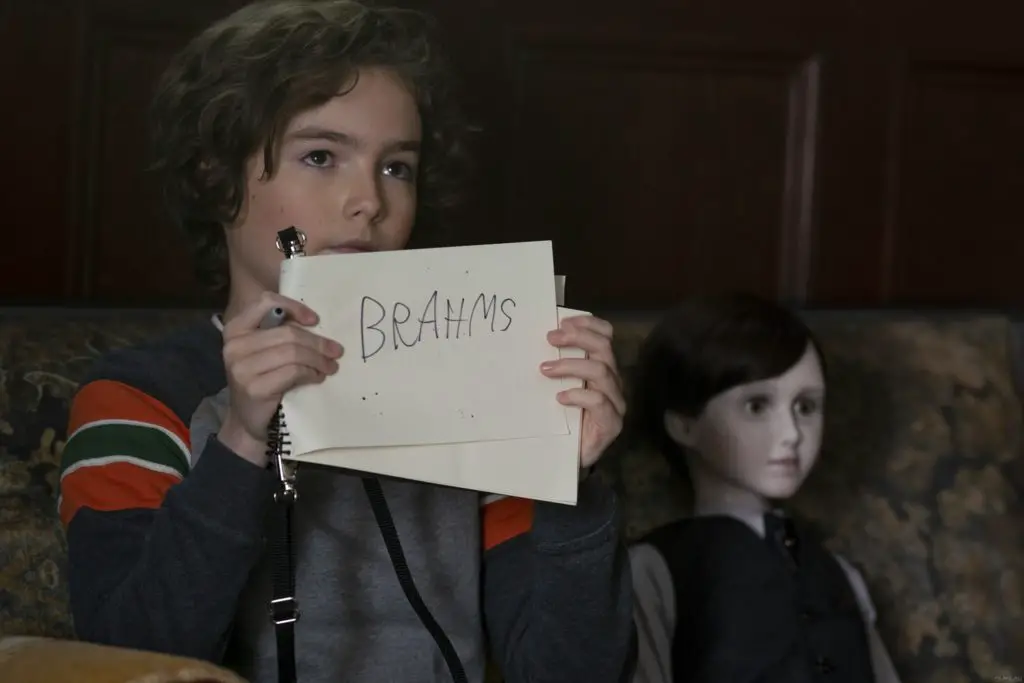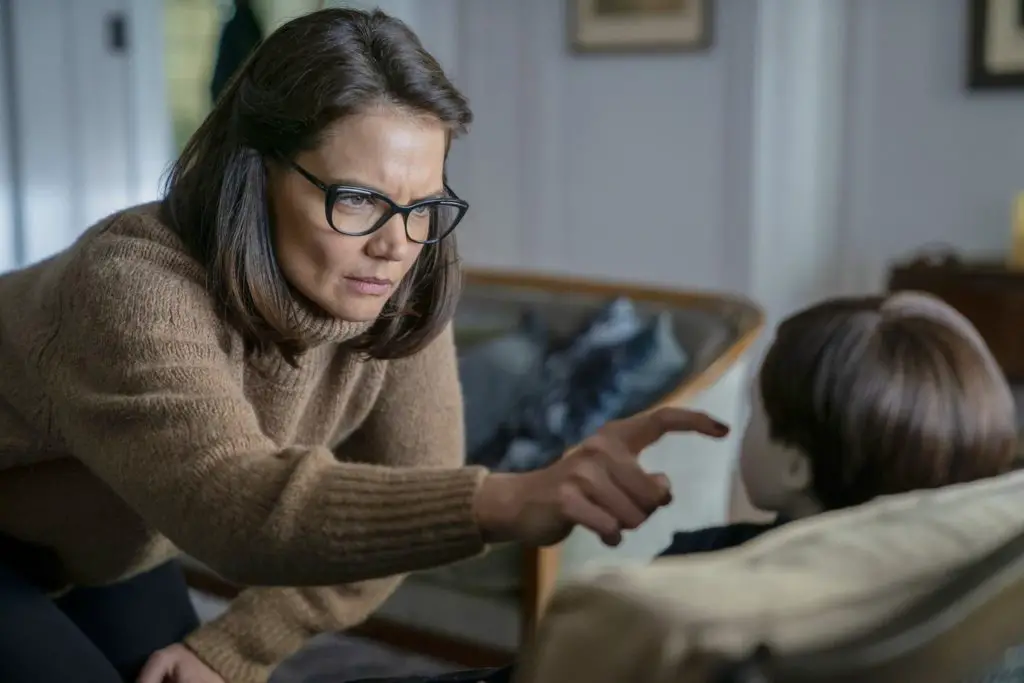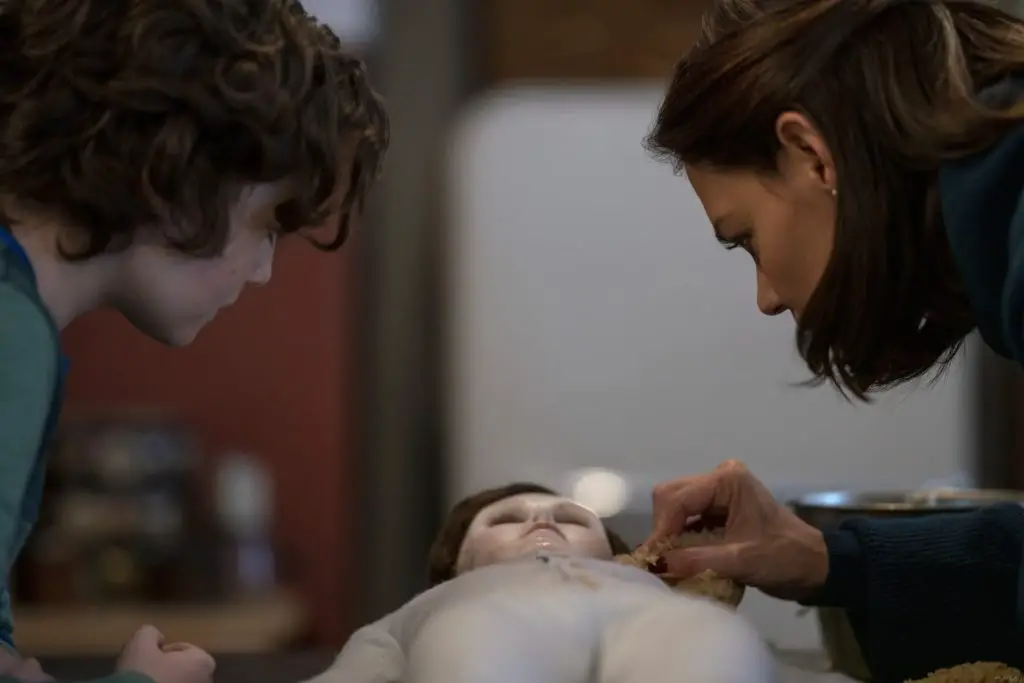Breaking the cliche failed: analysis of the film Brahms: The Boy II. The Plot And Meaning Of The Film Brahms: The Boy 2, Explanation Of The Ending, Similar Films
Country: USA, Canada
Genre: Horror, Mystery, Drama
Year of production: 2020
Director: William Brent Bell
Cast: Christopher Convery, Owain Yeoman, Katie Holmes, Ralph Ineson
tagline: “He’s got a friend”
Awards and nominations: 2021 Golden Raspberry Anti-Award for Worst Actress (Katie Holmes)
Most critics who attempt to interpret the meaning of the film “Doll 2: Brahms” (Brahms: The Boy II), announced as a sequel to the first “Doll” in 2016, come to the conclusion that the creators have distorted and spoiled the idea of the predecessor film. Let’s figure out if this is so and what explanation the screenwriter and director gave this time to the terrible secrets of the Hilshir mansion.
What is the movie about
Brahms: The Boy II tells about completely different characters than in the first part. We will meet only mentions of familiar heroes.
Lisa and her son Jude are robbed in their own home. The mother begins to have nightmares, and the boy stops talking. He communicates with his parents using notes in a notebook.
 Christopher Convery as the boy Jud. Frame from the film.
Christopher Convery as the boy Jud. Frame from the film.
To help his wife and son cope with the horror they experienced, the father of the Sean family transports them to a guest house in nature, next to the Hilscher mansion, familiar to viewers from the first part. The family, unaware of local terrible secrets, walks around the surrounding area. Jude moves away from his parents, obeying a childish voice calling him, and finds a porcelain doll buried in the ground in the forest.
The boy brings her home. There is also a tattered sheet of paper with the rules for handling the doll, also familiar from the first part (according to them, a porcelain toy should be nursed like a real child). Lisa, these findings are frightening. However, thanks to them, the son begins to talk again – however, not yet with his parents, but with the doll. Jude calls her Brahms. When asked, the boy replies that the name was given to him by the doll itself. It seems to Lisa that Brahms seems to come to life, but this is attributed to psychosis.
The family meets a caretaker named Joseph. He lives nearby and guards the estate. Judging by his behavior, he knows something about the doll.
Jude shows his parents an updated list of rules for dealing with Brahms, which included the addition that the doll should be with the boy “always and forever.” Parents discover a torn teddy bear – a toy for their son. Jude explains that this is the work of Brahms.
We again see that the doll moves, moves in space (unlike the first film, this is presented as a really independent behavior of the toy) and scares Lisa in other fantastic ways.
 Katie Holmes as Lisa. Frame from the film.
Katie Holmes as Lisa. Frame from the film.
Joseph talks to Jude, asking him what he named the doll. Hearing the name, the watchman is not at all surprised: “Of course, his name is Brahms. What else can you call him?”
Lisa takes her son’s notebook and finds terrible drawings there, which show how the boy is doing bloody reprisals against the watchman’s dog and over them. In addition, the pages seem to contain correspondence between Jude and Brahms – the remarks are written in different handwriting.
Contrary to the written rules, the parents refuse to “feed” Brahms and are going to invite guests to the house. Jude reports that this angers the doll. Immediately, the mother discovers an overturned heavy table, which the boy would hardly have been able to move.
Lisa decides to show her husband a notebook with scary drawings, but most of them disappear. Sean does not believe in mysticism, but agrees with his wife that it is better to throw away the doll.
Terrible pictures begin to come true: Joseph finds his dead dog with a gutted belly in the forest.
Jude runs away from home with the doll. In search of her son, Lisa enters the mansion – everything is there, as during the life of the Hilscher family. Even on the wall hangs the same picture with their image. Liza goes to the children’s voice and gets into the secret room where Brahms Hilscher lived from the first part. Jude enters wearing his porcelain mask. But he immediately apologizes for being frightened, now using his voice to communicate instead of writing in a notebook. Joseph appears and tells the story of the family of the owners of the mansion: about a child (Brahms Hilshir) burned in a fire, about how he hid in secret rooms, frightening and killing people, about how his parents drowned themselves. All this is also known to the audience from the first film. Joseph adds that Brahms Hilshir also committed suicide.
In a session with a family psychologist, Jude reveals that Brahms lived in other families, and now lives with him, and it’s better not to make him angry. The psychologist is puzzled and advises parents to keep a close eye on their son.
 Frame from the film.
Frame from the film.
Guests are coming to the guesthouse. Judah’s older cousin is being boorish towards him and the doll. He begins to destroy everything around, encroaching on Brahms as well. Jude warns that the doll might get revenge. But the impudent cousin continues to attack and immediately “accidentally” falls on a stake that he had just made himself, receiving a serious wound.
Jude tells her mother that the doll does not want to let him go – she wants to live with him in the mansion forever. Brahms is gaining strength and the boy can no longer control him.
Lisa finds information about the doll on the Internet and finds out that before the Hillshires, many families owned Brahms, and each of them had a tragedy: children killed their parents, blaming the doll for it.
Meanwhile, Sean, while in the city, learns that the janitor Joseph is the new owner of the mansion.
Jude goes missing again with the doll. Joseph breaks into the guest house with a gun. He says that Brahms manages not only children, but also broken adults – including himself. It was Joseph who glued the doll together in the first part. Lisa overpowers the watchman and runs towards the mansion. There, in the basement, Jude again put on a porcelain mask, holding Brahms in his hands. The boy picks up the gun brought by his mother and points the barrel at her. Sean appears and smashes the doll with a sledgehammer. The gun immediately falls out of Jude’s hands.
Under the broken porcelain of the doll, we see the terrible appearance of Brahms. With the help of an explosion, he kills Joseph. Jude picks up the monster and throws it into the furnace.
The family returns to the city. Everyone now seems to be happy and living a quiet life. But at the very end, Jude again takes out a porcelain mask and talks to Brahms.
Ending explanation
So, both the finale of the film and the rest of its content actually crosses out the meaning of the first part. The solution given there explained the imaginary mysticism by the real actions of people. The idea of the second part turns everything upside down again. After all, it turns out that the doll is alive. More precisely, there is a certain spirit named Brahms, who is able to control both the doll and people. He has been doing this for a long time. And for a long time, throughout the history of the mansion, he commits murders. The spirit controlled both the actions of the son of Mr. and Mrs. Hilshir (probably their suicide – also the result of mystical manipulation), and now the actions of Jude and Joseph. This time, the doll acquired a body in the form of a burnt monster, although in the first part it simply broke and there was nothing inside it.
The realism that underpinned the twist of the first Doll in Doll 2: Brahms has become mystical again. But this was done not with the help of a skillful breaking of clichés, as in the original, but thanks to these clichés. Thus, the meaning of the ending of the film “Doll 2: Brahms” was likened to the meaning of a dozen similar films: evil in the form of a spirit or demon that inhabits people and inanimate objects triumphs. The main characters could not oppose him.
It would be possible not to fall into disappointment and accept such an explanation for the ending. However, in the first part, the viewer was made clear not only that it was not the spirit that did evil, but the crazy son of the Hilshirov (it is possible to interpret events as mutual actions of a person and an intangible being), but also that the doll was created in his image and likeness. The similarity of the porcelain toy and the Brahms boy was emphasized many times.
The meaning of the film
It turns out that it is useless to analyze and compare “Doll” and Brahms: The Boy II. One film contradicts another both in meaning and even in superficial description. Brahms: The Boy II can be considered a continuation conditionally. Many horror film franchises do this. Often in the first part, a maniac-killer, terrorizing the blooming youth, can turn out to be a mortal person, and in the continuation, in a strange way, turn into some kind of immortal being with superpowers that allow him to appear anywhere and anytime.
The reason for the disappointing ending and the distorted meaning is probably the desire to make another long-running franchise and compete with the scary Chucky and Annabelle dolls.
It is hardly worth looking for a hidden meaning in the picture. The essence of the film is to scare and entertain the viewer. However, to do this for real, with a catchy intrigue, did not work. The moral here can only be found if you try hard. For example, about the value of mutual understanding, about the power of love, which needs to be worked on in order to overcome merciless evil. But it seems that the authors, plunging into mysticism and quite a bit into psychologism, did not think about this at all.
 Frame from the film.
Frame from the film.
Similar films
Unlike the first part, “Doll 2: Brahms” really turned out to be similar to many other horror films about killer dolls. An example is:
- Annabelle’s Curse (USA, 2014): a rare vintage doll bears a curse;
- Annabelle: Creation of Evil (USA, 2017): a prequel to the killer doll story;
- Children’s Games (USA, 1988): the soul of a serial maniac inhabits an ordinary mass-produced doll;
- Children’s Games 2 (USA, 1999): Sequel to the Maniac Doll movie;
- Chucky (USA, 2021): A horror TV series that is part of the Child’s Play universe.
- Dead Silence (USA, 2006): the ventriloquist’s puppet brings death – horror with an unexpected twist.







